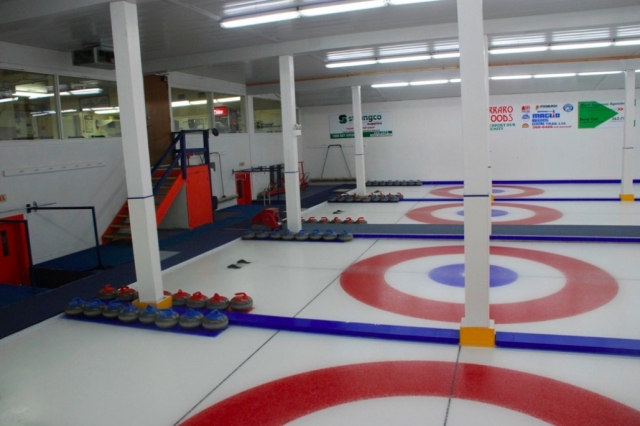ANALYSIS: Do community groups pay their way in Rossland, and can municipalities' budgets be compared?
Readers have suggested at least two important questions since we published the budget analysis and initiated our “Budge the Budget” DemocracySTORM: to what extent are community and recreation organizations paying their own way? And can we compare our budget with that of other communities?
In keeping with the budget analysis, actual 2011 revenues and expenses are reported below.
1. DO COMMUNITY GROUPS PAY THEIR WAY?
Some community organizations earn revenues, so it is more instructive to look at the net cost to the city—the balance of revenues and expenses. We were asked specifically about the arena and the Miners’ Hall.
We’ve also looked at “total community assistance” that includes the Miners’ Hall and Arena, but also a wide range of other community programs and facilities subsidized by the city, such as the museum, library, Sustainability Commission, Neighbourhoods of Learning, and so on.
We’ve excluded Tourism Rossland (net cost $30,000), the Chamber of Commerce (net cost $41,400), and Golden City Days and Winter Carnival (net cost $14,300) from “total community assistance.”
Arena’s net cost: $132,390 (58% of expenses paid by city)
Revenues: $96,510
- Arena (ice time, etc.) — $78,767
- Concession and shop — $17,180
- Other (advertising, incidental) — $562
Expenses: $228,900
Miners’ Hall net cost: $15,209 (40% of expenses paid by city)
Revenues: $22,977
- Rental — $12,177
- “In house” use —$10,800
Expenses: $38,186
Total community assistance, net cost: $664,149 (74% of expenses paid by city)
Revenues: $229,129
- Recreation, building rentals, etc. — $191,058
- Grants — $38,071
Expenses: $893,278
- Community organization support, etc.: $471,535
- Recreation facilities and programming: $421,743
What does that mean?
For every dollar spent keeping community-supported facilities or organizations afloat, organizations or facilities earn an average of 25 cents towards the bill.
Some groups and facilities earn more money, like the Miners’ Hall (60 cents towards every dollar spent in 2011), the Sustainability Commission and the Arena (both 42 cents towards each dollar), or Neighbourhoods of Learning (27 cents towards each dollar).
Some, like the museum and library, do not bring in any direct revenue for the city.
But what about other values?
There are many monied values that are difficult to account for, such as these hypothetical examples: figure skaters who dropped in on the chocolate shop to celebrate; trail riders who chowed down at the Steamshovel; visiting members of the adapting to climate change committee who told friends about the charms of Rossland and convinced them to come for a week of skiing.
Beyond money, we have to ask, “what do we value?” It’s an important question to ponder as our governments and corporations sell off our planet’s natural capital like there’s no tomorrow, all for the sake of GDP, a narrow measure of value at best.
At the scale of Rossland, what about the value of investing in our social capital? A town known as a cultural hub will attract intellects, epicureans, artists, and musicians. A town known as a recreational hub will attract athletes, outdoorsmen, gardeners and more. As reputations grow, that attracts yet more new blood and new ideas.
Investments in society can also satisfy moral imperatives (like caring for the needy) that GDP and stock prices can touch only distantly through mounting bills for prisons, justice, policing, institutions, medicine, and more.
2. MUNICIPAL COMPARISONS
Yes, it is possible to compare municipal budgets, but it’s a lot of work and not necessarily instructive.
First we would identify comparable communities and request their latest financial plans. But every comparison is fraught with hazards. Maybe one community has a lot more roads, another a lot more crime, another a lot more highway traffic, and on and on. No two communities are alike.
The second ingredient is a list of services and facilities to focus on, to help keep the analysis smaller. Comparing big, aggregate numbers—such as all transportation costs of city A versus city B— could be grossly misleading. Ultimately, the more specific our question, the more useful a comparison can be.
The third ingredient is some fool with time to crunch the data! I hear Bob Dylan singing “It ain’t me, babe, no, no, no…”
Let’s take bylaw enforcement and animal control as a budget item that helps illustrate these issues.
Bylaw enforcement and animal control
Rossland’s expenditure on bylaw enforcement and animal control was only $38,388 for 2011. Without doing a specific comparison, I suspect that is low relative to what most similar towns pay for the service.
But that $38,000 only paid for about 600 hours of enforcement. Do other similar communities pay $63 (now $73) for each hour of this service?
We can go through the math:
Rossland’s corporate officer (“city clerk” in the budget) and the public works clerk each contribute part of their work time to bylaw enforcement and animal control—15 per cent and 20 per cent of their time, respectively, according to the 2012-2016 financial plan.
35 hours per week is approximately 1700 hours of work per year, and 35 per cent of that is about 600 hours.
$38,000 divided by 600 hours is more than $63 per hour of service, of which some $47 per hour went to salary and wages alone.
In the 2012 budget, it’s $73 per hour of service of which $52 per hour goes towards wages.
I’m not sure if that’s value for service, even if the total budget is comparatively low. The specific question to ask would be: what do other cities pay staff per hour for bylaw enforcement and animal control?


























